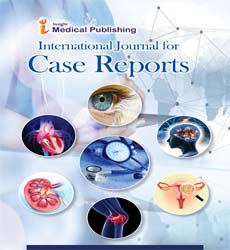Stages of menstrual cycle
Abstract
Each month during the years between puberty and menopause, a woman’s body goes through a number of changes to get it ready for a possible pregnancy. This series of hormone-driven events is called the menstrual cycle. During each menstrual cycle, an egg develops and is released from the ovaries. The lining of the uterus builds up. If a pregnancy doesn’t happen, the uterine lining sheds during a menstrual period. Then the cycle starts again. A woman’s menstrual cycle is divided into four phases: menstrual phase follicular phase ovulation phase luteal phase The length of each phase can differ from woman to woman, and it can change over time. Menstrual phase The menstrual phase is the first stage of the menstrual cycle. It’s also when you get your period. This phase starts when an egg from the previous cycle isn’t fertilized. Because pregnancy hasn’t taken place, levels of the hormones estrogen and progesterone drop. The thickened lining of your uterus, which would support a pregnancy, is no longer needed, so it sheds through your vagina. During your period, you release a combination of blood, mucus, and tissue from your uterus. You may have period symptoms like these: cramps (try these home remedies) tender breasts bloating mood swings irritability headaches tiredness low back pain On average, women are in the menstrual phase of their cycle for 3 to 7 days. Some women have longer periods than others. Stages of the Menstrual Cycle Medically reviewed by Holly Ernst, PA-C — Written by Stephanie Watson — Updated on March 29, 2019 Menstrual Follicular Ovulation Luteal Common issues Takeaway Overview Each month during the years between puberty and menopause, a woman’s body goes through a number of changes to get it ready for a possible pregnancy. A woman’s menstrual cycle is divided into four phases: menstrual phase follicular phase ovulation phase luteal phase The length of each phase can differ from woman to woman, and it can change over time. During your period, you release a combination of blood, mucus, and tissue from your uterus. You may have period symptoms like these: cramps (try these home remedies) tender breasts bloating mood swings irritability headaches tiredness low back pain On average, women are in the menstrual phase of their cycle for 3 to 7 days. Some women have longer periods than others. Follicular phase The follicular phase starts on the first day of your period (so there is some overlap with the menstrual phase) and ends when you ovulate. It starts when the hypothalamus sends a signal to your pituitary gland to release follicle-stimulating hormone (FSH). This hormone stimulates your ovaries to produce around 5 to 20 small sacs called follicles. Each follicle contains an immature egg. Only the healthiest egg will eventually mature. (On rare occasions, a woman may have two eggs mature.) The rest of the follicles will be reabsorbed into your body. The maturing follicle sets off a surge in estrogen that thickens the lining of your uterus. This creates a nutrientrich environment for an embryo to grow. The average follicular phaseTrusted Source lasts for about 16 days. It can range from 11 to 27 days, depending on your cycle. Ovulation phase Rising estrogen levels during the follicular phase trigger your pituitary gland to release luteinizing hormone (LH). This is what starts the process of ovulation. Ovulation is when your ovary releases a mature egg. The egg travels down the fallopian tube toward the uterus to be fertilized by sperm. The ovulation phase is the only time during your menstrual cycle when you can get pregnant. You can tell that you’re ovulating by symptoms like these: a slight rise in basal body temperature thicker discharge that has the texture of egg whites Ovulation happens at around day 14 if you have a 28-day cycle — right in the middle of your menstrual cycle. It lasts about 24 hours. After a day, the egg will die or dissolve if it isn’t fertilized.This structure releases hormones, mainly progesterone and some estrogen. The rise in hormones keeps your uterine lining thick and ready for a fertilized egg to implant. If you do get pregnant, your body will produce human chorionic gonadotropin (hCG). This is the hormone pregnancy tests detect. It helps maintain the corpus luteum and keeps the uterine lining thick. If you don’t get pregnant, the corpus luteum will shrink away and be resorbed. This leads to decreased levels of estrogen and progesterone, which causes the onset of your period. The uterine lining will shed during your period. During this phase, if you don’t get pregnant, you may experience symptoms of premenstrual syndrome (PMS). These include: bloating breast swelling, pain, or tenderness mood changes headache weight gain changes in sexual desire food cravings trouble sleeping The luteal phase lasts for 11 to 17 days. The average length Trusted Source is 14 days.
Open Access Journals
- Aquaculture & Veterinary Science
- Chemistry & Chemical Sciences
- Clinical Sciences
- Engineering
- General Science
- Genetics & Molecular Biology
- Health Care & Nursing
- Immunology & Microbiology
- Materials Science
- Mathematics & Physics
- Medical Sciences
- Neurology & Psychiatry
- Oncology & Cancer Science
- Pharmaceutical Sciences
